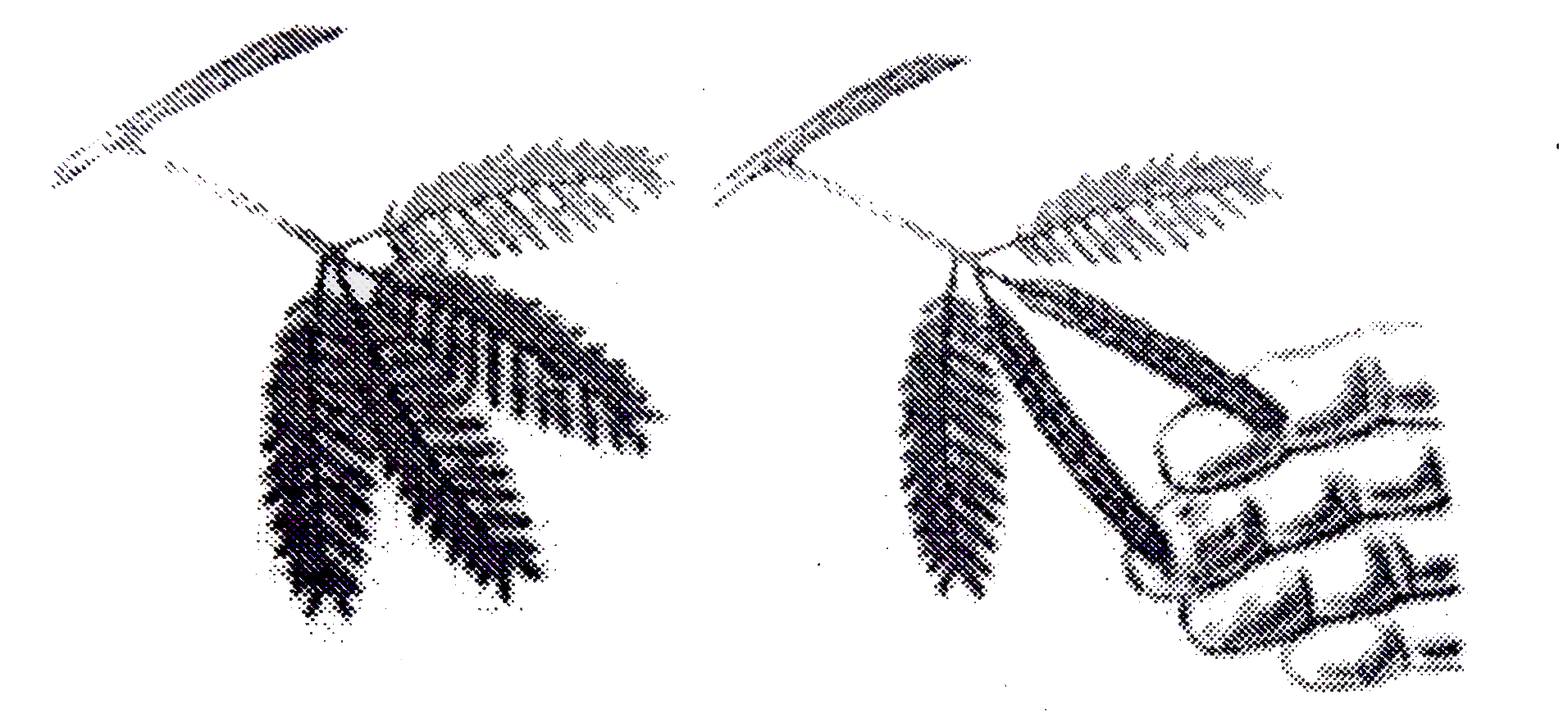Mention the inter conversions associated with the following phenomena.
Appearance of dew drops on the leaves on winter morning.
To explain the interconversions associated with the appearance of dew drops on leaves on a winter morning, we can break it down into the following steps:
1. Understanding the Phenomenon:
- Dew drops appear on leaves during winter mornings due to the cooling of air and surfaces.
2. Identifying the Process:
- The main process involved in the formation of dew is called condensation.
3. Explaining Condensation:
- Condensation is the process where water vapor (gas) in the air changes into liquid water. This typically occurs when the temperature drops.
4. Temperature Effect:
- In winter mornings, the temperature is lower, which causes the water vapor present in the air to lose energy and change into liquid form.
5. Formation of Dew Drops:
- When the water vapor comes into contact with the cooler surfaces of the leaves, it condenses into tiny droplets of water, forming what we see as dew drops.
6. Interconversion Summary:
- The interconversion involved here is:
- Water vapor (gas) → Water drops (liquid) through the process of condensation.
Final Answer:
The interconversion associated with the appearance of dew drops on leaves on a winter morning is the condensation of water vapor into liquid water.
---
- Dew drops appear on leaves during winter mornings due to the cooling of air and surfaces.
- The main process involved in the formation of dew is called condensation.
- Condensation is the process where water vapor (gas) in the air changes into liquid water. This typically occurs when the temperature drops.
- In winter mornings, the temperature is lower, which causes the water vapor present in the air to lose energy and change into liquid form.
- When the water vapor comes into contact with the cooler surfaces of the leaves, it condenses into tiny droplets of water, forming what we see as dew drops.
- The interconversion involved here is:
- Water vapor (gas) → Water drops (liquid) through the process of condensation.
The interconversion associated with the appearance of dew drops on leaves on a winter morning is the condensation of water vapor into liquid water.
Topper's Solved these Questions
- MYSTERY OF MATTER BOOK - PEARSON IIT JEE FOUNDATIONCHAPTER - MYSTERY OF MATTER EXERCISE - CONCEPT APPLICATION
5 Videos
- MYSTERY OF MATTER BOOK - PEARSON IIT JEE FOUNDATIONCHAPTER - MYSTERY OF MATTER EXERCISE - ASSESSMENT TEST (TEST -1)
34 Videos
- MYSTERY OF MATTER BOOK - PEARSON IIT JEE FOUNDATIONCHAPTER - MYSTERY OF MATTER EXERCISE - TEST YOUR CONCEPTS (VERY SHORT ANSWER TYPE QUESTION)
53 Videos
- LANGUAGE OF CHEMISTRY AND CHANGES AROUND US BOOK - PEARSON IIT JEE FOUNDATIONCHAPTER - LANGUAGE OF CHEMISTRY AND CHANGES AROUND US EXERCISE - ASSESSMENT TEST (TEST 1)
13 Videos
- WATER - A WONDER LIQUIDBOOK - PEARSON IIT JEE FOUNDATIONCHAPTER - WATER - A WONDER LIQUIDEXERCISE - Crossword
1 Videos
Similar Questions
Knowledge Check
Which of the following conditions are associated with EI nino phenomena ?
AHeavy rains in South America and droughts in AustraliaBDroghts in South America and heavy rains in AustraliaCHeavy rains in both South America and AustraliaDDroughts in both South America and Australia
Mention the inter conversions associated with the following phenomena.
Wet clothes are hanged on a string.
View SolutionMention the inter conversions associated with the following phenomena.
Reduction is size of napthalene balls when placed in a cupboard.
View SolutionMention the inter-conversions associated with the following phenomena.
(a) Wet clothes are hanged on a string.
(b) Appearance of dew drops on the leaves on winter morning.
(c) Foggy appearance on a mirror when exhaled air is blown over it.
(d) Occurrence of snow fall.
(e) Reduction in size of naphthalene balls when placed in a cupboard.
View SolutionWhy do we see water droplets (dew) on leaves in winter?
View SolutionWhy do we see water droplets (dew) on leaves in winter?
View Solution
Answer the following questions based on the given figure.
a) What does the above diagram indicate?
b) Mention the terms associated with the change.
c) Define the terms mentioned in b)
d) Explain the phenomenon in brief?
View SolutionName the phenomena causing the following events : Formation of dew
View Solution
